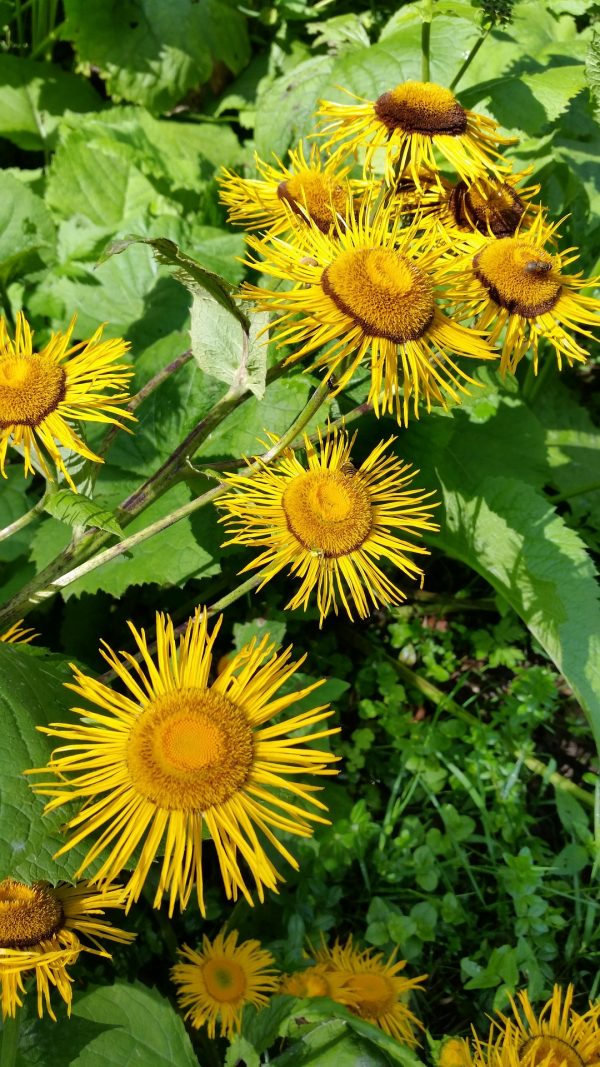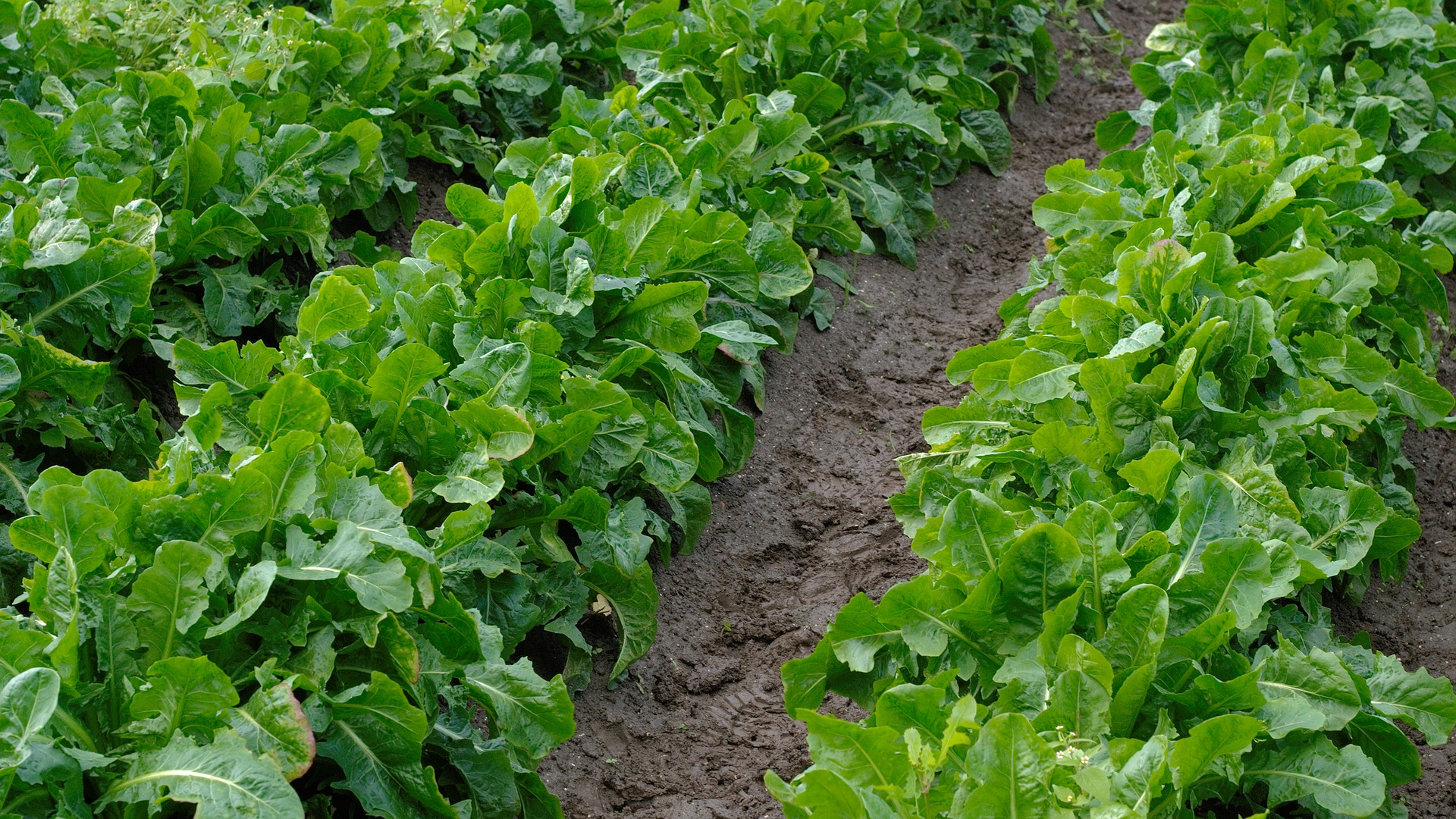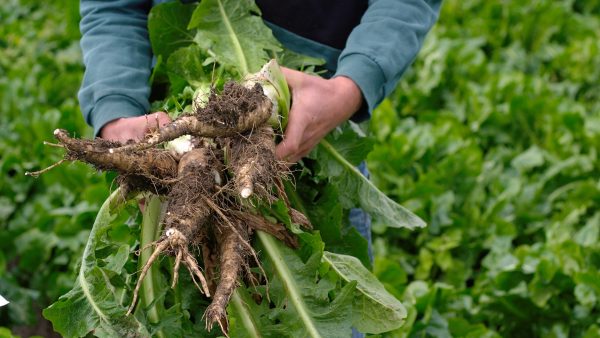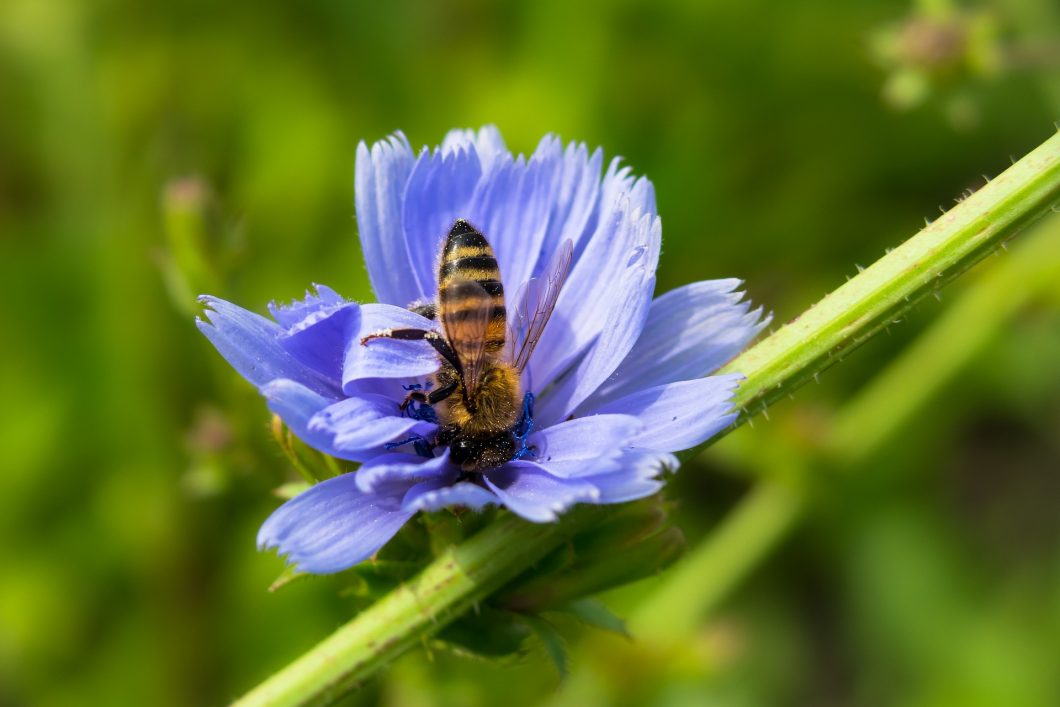Inulin – from seed to Eureba
Product development • Chicory is grown for the extraction of inulin, used in the food industry to replace sugar and fat. Inulin works best in combination with other ingredients - as in Bayn’s sweetened fibres - Eureba. Would you like to learn more about inulin and the path from chicory seed to Eureba? Read on!
Chicory is a perennial tall plant with beautiful, blue flowers. It grows wild by the roadsides throughout Europe, as far north as the southern parts of Scandinavia. But it is also farmed, mainly for its roots which are rich in the dietary fibre inulin. This is one of the fibres we use in several of our sweetened fibres that we market under the brand Eureba. So, what exactly is inulin and why is it extracted from the chicory root? Let’s find out.
Fibres
Inulin is a carbohydrate that passes through your digestive tract without being digested or absorbed. On the way it absorbs liquid and becomes a gel. This makes inulin a soluble dietary fibre.
Dietary fibres, or in short fibres, are called edible carbohydrates that are neither digested nor absorbed in the small intestine in humans. They can be found naturally in foods and have a beneficial physiological effect, as demonstrated by widely accepted scientific evidence.
Fibres that dissolve in water and become a gel are called soluble fibres. And the others are quite logically called insoluble.
The Importance of Fibres in Digestion
Since fibres are not digested, they also don’t give any energy to the body and have no effect on the blood sugar. In addition, the gel of soluble fibres will stem the rise in blood sugar by protecting carbohydrates from breaking and glucose from being absorbed.
Fibres provide bulk, which increases the feeling of saturation. This feeling is prolonged by soluble fibres which slow down the digestive process.
Another benefit is that water-soluble fibres have been found to reduce the LDL, also known as “the bad cholesterol”.
Feed the good bacteria
Finally, fibres provide nourishment for the beneficial bacteria in the colon, they break them down into short-chain fatty acids and gases.
The latter could be a problem if you would consume too much fibre. 25 to 35 grams of fibre per day, is a guideline from the Swedish National Food Administration, for an adequate amount for adults. But the average consumers don’t consume that much fibre, according to Rikssmaten survey 2010-11*.
Inulin and oligofructose

None of this was known by German scientist Valentin Rose when he cooked the roots of Elecampane in 1804 and received a “strange vegetable substance”. The strange substance was inulin.
Inulin is a chain of two or more fructose moieties bound by ß (2 → 1) bonds. This formation is a key characteristic of inulin. Chains with up to nine fructose units are called fructooligosaccharides (abbreviated FOS) or oligofructose. Chains with 10+ fructose units are simply called inulin. Inulin can consist of more than 60 units of fructose.
Inulin in medicine
Inulin was thus discovered in Elecampane, also called horse-heal or elfdock. Its Latin name is Inula helenium. That’s where inulin got its name.
Elecampane has been cultivated since Roman times as a medicinal plant. It was considered a chest- and stomach remedy. A claim that is not completely And they might not be completely unfounded, as inulin is a popular ingredient in health- and functional food.
Inulin also has another therapeutic use. In the 1930s, when researchers studied the function of the kidneys, they searched for a substance that could function as a biomarker. Inulin’s resistance to digestion made it a perfect solution. It is still used today as a marker for renal function.
Primarily though, it is in the food and beverage industry that inulin is used.
Inulin in foods
Inulin is primarily used to fill the void when you reduce sugar or fat. Several of inulin’s properties make it interesting for this purpose.
Inulin has a subtle, sweet taste. Its sweetness varies with the number of fructose units. The shorter, the sweeter. Oligofructose, which is inulin with less than ten parts of fructose, has 30 to 50 percent of the sweetness of the sugar. While inulin with more than ten parts fructose has a sweetness between 1 to 14 percent of sugar.
To increase the sweetness, high-intensity sweetening agents can be added. Conversely, the discreet taste and sweetness of inulin can be used to mask a different taste or aftertaste of sweeteners.
When inulin is combined with other ingredients, you can use acid hydrolysis (water, acid and heat) to produce viscous liquids. If the proportion of inulin exceeds 15 percent, it can, as an example be used in jellies or creams.
Available in nature
Inulin is found in more than 35,000 different species of plants, including many common fruits and vegetables. Bananas contain 0.3 to 0.7 percent inulin. But this is nothing compared to:
- Wheat: 1–4 percent
- Artichoke: 2–3 percent
- Yellow onion: 1–8 percent
- Artichoke: 3–10 percent
- Garlic: 9–16 percent
- Leek: 16–20 percent
But for industrial production of inulin the root of the chicory plant (Cichorium intybus) is used. These roots contain of 15 to 20 percent inulin.

Inulin is a plant’s survival kit
Chicory is an easy crop to cultivate. As a crop, the plant is durable and easy to grow. The long taproot is resistant to drought and is therefore geographically suited for many different climates.
For the plant, inulin acts as a survival kit when nature plays hardball. Inulin is water-soluble and osmotically active. This means that plants can adjust the needs and fluid level in their cells. The plants do this by changing their metabolism and their composition of water and sugar molecules, without changing the total amount of carbohydrates. In this way, they can withstand both cold and dry weather during the winter without freezing or loss of nutrients.
Cultivation of chicory
This hardiness contributes to the popularity of chicory among growers. The herb originally comes from Europe and this is also where the largest chicory growing farms are. Chicory for commercial use is grown mainly in The Netherlands, Belgium and Germany.
Chicory is grown in much the same way as sugar beets or brassicas, sowing in spring and harvesting from September to December.

Preparation of inulin
Inulin is extracted from chicory roots in much the same way as sugar from sugar beets.
First, the chicory roots are cleaned, then sliced or crushed, and then soaked in 70-80°C hot water for about two hours to extract the inulin. The leached chips are dried and sold as animal feed.
The obtained raw juice contains a lot of unwanted substances. Much of this floats to the surface or sinks to the bottom, where it can be purified by liming and carbonation. The result is a juice that needs further purification.
In the next purification step ion-exchange is used. This is the same technique that is used for the purification of drinking water, from iron, manganese and other metals. Then the juice is run through activated carbon for decolourisation. And finally, the juice is sterilised by pressing it through a very fine filter.
The inulin now needs to be separated from the liquid. Most of it is done through evaporation, by centrifuging or both. The remains are injected under high pressure into a tank with hot air. When the dispersed droplets meet the hot air, the remaining liquid evaporates and we are left with inulin in the form of a powder.
Chicory is not only inulin
Although chicory is grown primarily for the production of inulin, it also has other uses. Several common lettuce varieties are varieties of chicory, like endives and curled-leaved endive.
Chicory is also used as a catch crop. This means that it is sown in the main crop, and it reduce nitrate leaching from the soil as the plant is turned into the soil again in the fall. Chicory is good at picking up nitrates from the ground right down to a metre deep.
Chicory is also suitable for grazing, as it grows mostly during the summer, when the growth of other pasture feeds slow down as weather gets hotter and drier.
Inulin in Eureba
Inulin is a dietary fibre with some sweetness. But not enough to replace sugar 1: 1. In addition, there are few foods where it is possible to remove one kilogram of sugar and replace it with one kilogram of inulin, without undesired side effects.
That’s why we develop sweetened fibres, they can really replace 1: 1 sugar in your recipe without having to alter your production. We have different sweetened fibres for different applications. A number of them contain, for example, inulin sweetened with steviol glycosides.
Finally
We hope we have whetted your appetite and you are now curious to learn more about Eureba. We may even have a ready-made solution for your specific needs. (It’s quite likely. If not, we will produce one for you.) Please, don’t hesitate to contact us. We would be happy to answer your questions. Give us a ring on +46 8 613 28 88 or send an e-mail to info@baynsolutions.com.
Please, share this article if you liked it.
[et_social_share]





